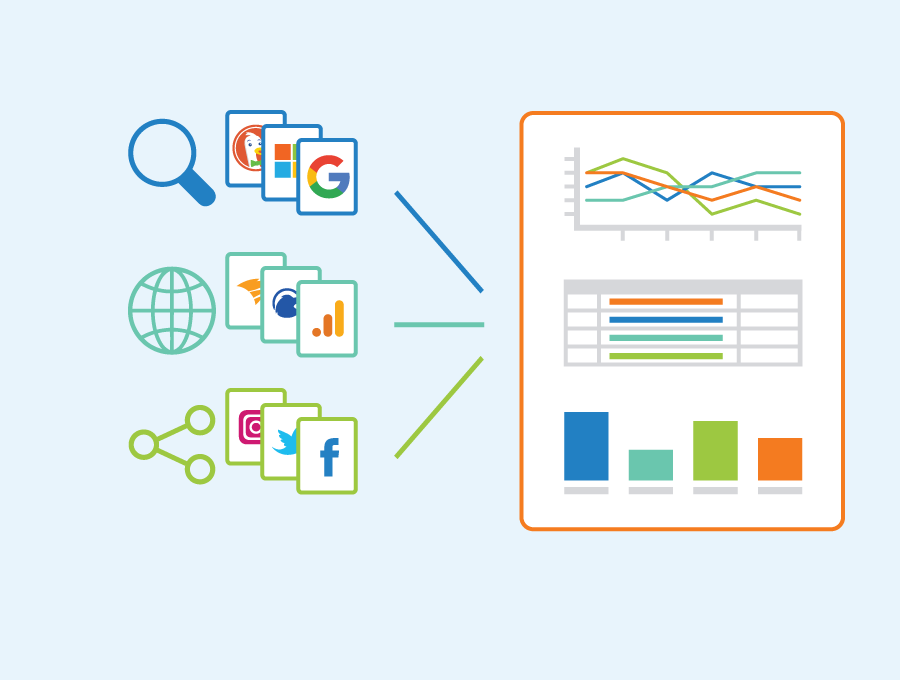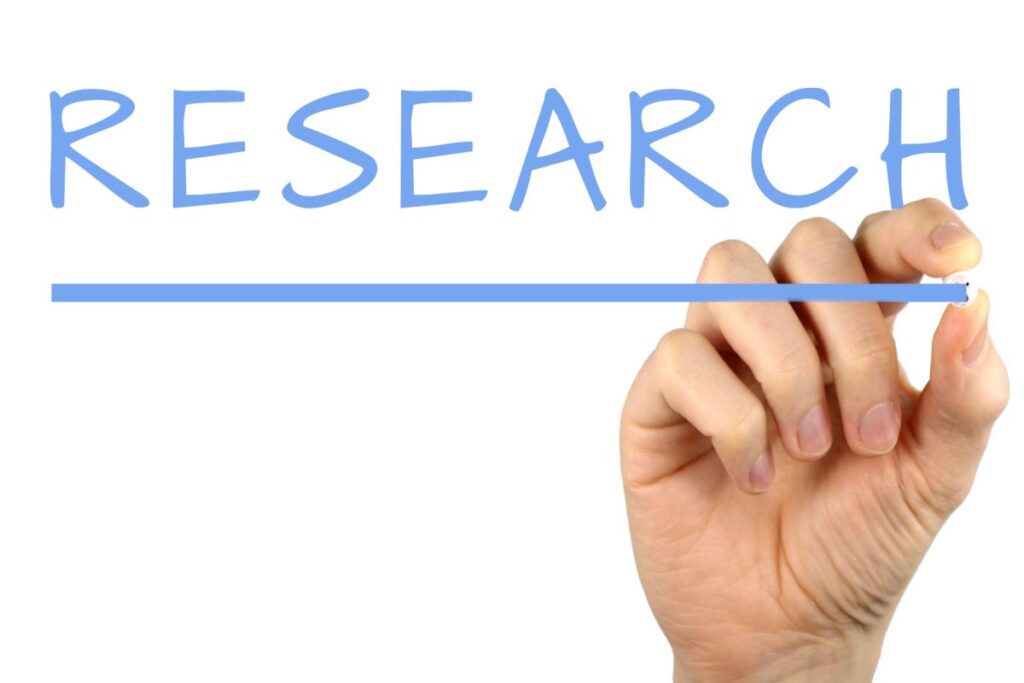Quantitative analyses of data involve two kinds of statistical tools. Descriptive statistics are designed to help summarize some collection of information. This is contrasted with inferential statistics, which, as the term suggests, are tools to help researchers use sample data to draw conclusions about populations.

This process usually involves assessing the probability that samples were part of populations with particular characteristics. The term population refers to a universe of events (e.g., people, types of statements, numbers of newspaper articles, or the like) from which a sample is drawn. These populations are universes to which a researcher is interested in generalizing, but a population does not have to be enormous. A communication studies department chair may be interested in knowing what proportion of undergraduate majors tend to apply to graduate school. The population of interest would not include all college students in the world, but only those at one location. This population could be small because the department might have a modest number of students. The point is that populations are defined by the researcher. In statistics, a number that is ‘a characteristic of a population’ or computed from a population is called a parameter.
Many pieces of data are from samples or selections from a larger collection of events. Naturally, nearly all published research in communication and the social sciences involves sample data.
Quantitative Methods
The quantitative methods are tools in which descriptions of observations are expressed in predominantly numerical terms. A reasonable person might wonder why it is necessary—or even desirable—to complete quantitative research. In part, the answer to this question stems from the fact that the tradition of quantitative research comes from efforts to apply the scientific method to explore vital research questions.
Yet, this statement does not mean that something is scientific just because it uses numbers. The scientific method is described in many ways, but one widely accepted view is that, at the very least, it involves gathering data and advancing “a functional relationship among these data”. Not all research questions require quantitative research methods. For instance, some research questions may be answered by applying critical standards to speeches.

Other research questions may be answered by looking at the development of ideas through the contributions of scholars over the years. These sorts of matters may be explored by use of qualitative research methods, which involve examination of predominantly nonquantitative data. In general, qualitative methods are used most often when researchers wish to describe, interpret, or criticize phenomena that typically are not summarized numerically.
Research questions invite use of quantitative analysis of data if they involve Issues of the current status of things that can meaningfully be summarized numerically; Prediction of values of variables from the occurrence of other variables, and Development of research measures.
Such research questions involve phenomena that can be identified and measured. These methods allow us to describe and predict phenomena rather than gathering evidence to help make philosophic or individualistic judgments about communication these methods have their limits. First, quantitative tools are useful only when it is possible to secure numbers to describe the frequency or extent of the presence of variables. Second, quantitative methods are not particularly helpful when the phenomena cannot be repeated. Thus, communication studies use both qualitative and quantitative methods.
There are many ways to classify quantitative research, but such communication studies tend to use two major groups of methods: surveys (taken generally) and experiments.
Surveys
Surveys are sometimes called descriptive empirical studies and use questionnaires, rating forms, or interviews to characterize phenomena. These techniques allow researchers to draw conclusions about relationships and group differences, but they do not permit direct claims of cause-and-effect relationships. There are at least three major types of these studies prominently used in communication studies:
• Descriptive or observational surveys: studies in which variables are not manipulated by researchers, though the methods of making observations and measurements may be carefully controlled. When researchers examine whether men or women have different rates of self-disclosure, for example, the type of study is descriptive because it is not really possible to manipulate the communicator’s sex. On the other hand, self-disclosure may be measured with highly sensitive tools and under carefully controlled conditions.
• Content analysis: a collection of methods ‘used to describe and systematically analyze the content of written, spoken, or pictorial communication—such as books, newspapers, television programs, or interview transcripts”. Such techniques typically count the frequency or the extent of various characteristics of messages, such as the length of newspaper articles on a subject, the number of minutes dedicated to television news, or the number of dysfluencies by speakers during impromptu speeches.
• Opinion surveys: surveys designed to identify how groups of people report their evaluations of various topics. Large-scale opinion polls of public reactions to the U.S. president following a State of the Union address are examples of such popular surveys.
Experimental Methods
Experimental methods study the effect of variables manipulated in situations where all other influences are held constant. Obviously, clever researchers may find it easy to manipulate variables, but the hard part comes in controlling all other influences. When the variation of some other variables mixes with the variation of the chief variables in a study, it is called confounding. When a study’s experimental variables are confounded with other variables, it becomes impossible to tell if any results are due to the operation of experimental variables, the confounding variables, or some mix of them. In addition to efforts at direct control, researchers also randomly assign subjects to experimental and control groups. As the terms suggest, an experimental group is a collection of events exposed to the experimental variable. Contrariwise, a control group is a collection of events receiving comparable treatment as the experimental group except that the experimental variable is absent.

Completing a study involving quantitative methods involves many steps that lead to the analysis of data.
The first step in an empirical study is stating a research problem worth investigating.
Problem questions tend to be stated either as direct questions (sometimes identified with the notation “RQ”), or as purpose or objective statements. These problem questions tend to satisfy a number of criteria. For instance, they tend to ask about at least two variables, though these days many problem questions deal with three or more variables of interest.
The Research Hypothesis. An answer to a research question is called a hypothesis. Stated precisely, a hypothesis is an expectation about events based on generalizations of the assumed relationship between variables. Hypotheses are abstract statements concerned with theories and concepts, whereas the observations used to test hypotheses are specific data based on facts.
Unlike the common notion that a hypothesis is just an “educated guess,” a hypothesis is the result of some inquiry and reasoning that leads to a possible answer to a research question. Hypotheses may be justified as extensions of past research or as applications for some theory or conceptual orientation. Occasionally you can read studies that have stated neither problem questions nor hypotheses. One wonders how the researchers knew when they were done with the research project.
Research hypotheses often are stated in ways that reflect the ways in which the research is designed. By the time researchers state hypotheses to answer research questions, they know if their research designs will ask about differences in proportions, difference between means, or magnitudes of correlations. Thus, the hypotheses are written in ways that reflect these choices. Researchers rarely use methods of statistical analysis to test research hypotheses directly. Instead, for the sake of argument, they posit null hypotheses that deny the existence of a relationship between two or more variables. By gathering data, researchers can show how improbable such a statement is, given the data that have been observed.
Selection of ways to measure important variables is given great attention in quantitative research. The reliability of a measure is the degree to which it is consistent and stable. As such, a reliable measure gives results that tend to show little variation over time validity of a measure is the degree to which the measure can be shown to measure what it claims to measure. There are many techniques to demonstrate reliability and validity of measures. Thus, researchers regularly take time to explain evidence for the adequacy of their measures.
